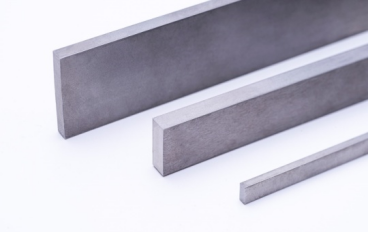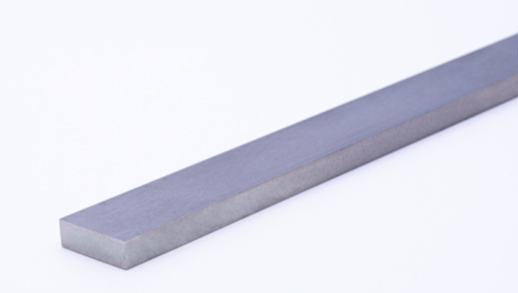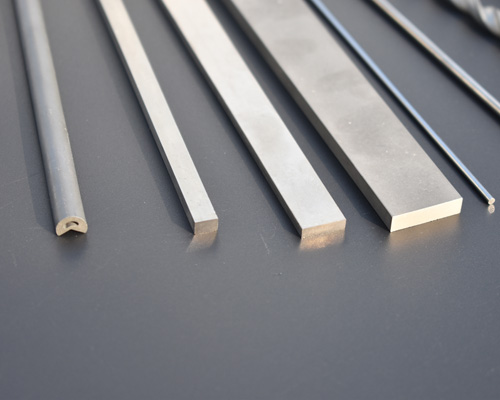Cemented carbide strips have stood the test of time as a reliable and durable material. These strips, with their exceptional hardness and wear resistance, are essential components in various cutting tools and wear parts. Understanding the historical significance of cemented carbide can provide valuable insights into its modern-day uses and advancements. Let's delve into the evolution of this material and explore how it continues to shape industries worldwide.
Composition of Cemented Carbide Strips
Primary Elements
They are primarily composed of tungsten carbide and cobalt. These two elements play a crucial role in determining the properties and performance of the material.
Role of Cobalt
Cobalt serves as a binding agent in cemented carbide strips, holding the tungsten carbide particles together. It enhances the toughness and impact resistance of the material, making it suitable for various industrial applications.
Percentage of Tungsten
In your cemented carbide strips, you will typically find a high percentage of tungsten, ranging from 70% to 94%. This high tungsten content contributes to the hardness and wear resistance of the material, ensuring durability and longevity in use.

Key Properties: Hardness and Resistance
Exceptional Hardness
When working with cemented carbide strips, you'll notice their remarkable hardness. This property makes them ideal for applications requiring durability and longevity.
The hardness of these strips allows them to withstand high levels of stress, ensuring they maintain their shape and integrity even in demanding environments.
Wear and Corrosion Resistance
Cemented carbide strips exhibit impressive resistance to both wear and corrosion. This means that your components or tools made from these materials will last longer, reducing the need for frequent replacements.
Their resistance to wear ensures that they can endure friction and abrasive forces without deteriorating quickly, making them a cost-effective choice in the long run.
High Compressive Strength
One key advantage of https://www.diatooling.com/cemented-carbide-strip.html is their high compressive strength. This characteristic enables them to withstand heavy loads without deforming or breaking, making them suitable for various industrial applications where pressure is involved.
Their ability to maintain structural integrity under compressive forces ensures reliable performance in challenging conditions.
The Manufacturing Journey of Carbide Strips
Compacting Process
When creating cemented carbide strips, the first step involves compacting a mixture of tungsten carbide powder and a binder. This process is crucial as it determines the strip's final density and strength.
During this stage, the powder blend is pressed into molds at high pressures to form the desired shape. Proper compaction ensures uniform distribution of particles, leading to enhanced hardness and wear resistance in the finished product.

Shaping Techniques
Following compaction, shaping techniques such as extrusion or grinding are employed to achieve precise dimensions and surface finishes. These processes play a vital role in refining the strip's geometry and ensuring it meets specific tolerances for various applications.
Shaping not only enhances the aesthetic appeal of carbide strips but also improves their functionality by providing smooth edges that reduce friction during use. It contributes to overall product quality and performance.
Importance of Sintering
The final critical step in manufacturing cemented carbide strips is sintering. This process involves heating the compacted and shaped strips in a controlled atmosphere furnace to bond the particles together through diffusion.
Sintering significantly influences the mechanical properties of strips, enhancing their hardness, toughness, and overall durability. It transforms the pressed powder into a solid material with superior wear resistance, making it ideal for demanding industrial applications.
Powder Metallurgy Techniques Explained
When working with cemented carbide strips, you'll encounter the fascinating world of powder metallurgy. This technique involves creating metal powders and then molding them into desired shapes.
Blending of Powders
During the process, various metal powders are carefully blended to achieve specific properties in the final product. The blending stage is crucial as it determines the characteristics of the cemented carbide strip.
Pressing and Forming Techniques
Once the powders are blended, they undergo pressing and forming techniques. Through high-pressure compaction, the powders are shaped into molds to create a cohesive structure for the carbide strips.
Sintering Processes for Enhanced Toughness
Temperature Control
When sintering https://www.diatooling.com/cemented-carbide-strip.html, controlling the temperature is crucial. Higher temperatures help in achieving better densification of the material, enhancing its strength.
Pressure Application
Applying optimal pressure during sintering plays a significant role in determining the final properties of the carbide strips. The right pressure ensures proper bonding and density.
Liquid Phase Sintering
Liquid phase sintering is a technique used to enhance toughness in cemented carbide strips. It involves adding a liquid binder to facilitate particle rearrangement, resulting in improved mechanical properties.
Metalworking Applications of Carbide Strips
Versatile Uses
Carbide strips find diverse applications in metalworking, from cutting and shaping metals to creating precise components for various industries. Whether you are crafting intricate parts or working on heavy-duty projects, these strips offer durability and efficiency.
Cutting Tools
In metalworking, carbide strips are extensively used in the production of high-quality cutting tools. The hardness and wear resistance of carbide make it ideal for machining tough materials like steel, stainless steel, and titanium. With carbide strips, you can achieve clean cuts with minimal tool wear.
Precision Machining Benefits
Using carbide strips can significantly improve your efficiency and accuracy. The superior hardness of carbide ensures longer tool life and maintains sharp edges even under high-speed operations. This results in smoother finishes on your workpieces while reducing the need for frequent tool changes.
Woodworking and Construction Uses
Woodworking
When utilizing cemented carbide strips in woodworking, you'll appreciate their precision cutting abilities. The narrow width of these strips allows for intricate detailing on various wooden surfaces.
In your woodworking projects, the carbide strip's durability ensures long-lasting performance even with continuous use. Its ability to maintain sharp edges reduces the need for frequent replacements, saving you time and money.

Construction
For construction purposes, incorporating https://www.diatooling.com/cemented-carbide-strip.html enhances the efficiency of your tools and equipment. The hardness of these strips enables them to withstand tough materials like concrete and stone.
With carbide strips, you can achieve cleaner cuts during construction tasks, leading to smoother finishes on surfaces. Their resistance to wear and tear ensures consistent performance throughout your projects.
In these industries, the longevity of cemented carbide strips is a significant advantage. Their robust nature allows them to withstand heavy usage without compromising on quality or precision.
Mining Industry Applications
Drilling Efficiency
Carbide strips play a crucial role in mining operations by enhancing drilling efficiency. The hardness and toughness of carbide make it ideal for drilling through tough rock formations efficiently.
Excavation Precision
In mining, the precision required during excavation processes is paramount. Carbide strips provide the necessary precision due to their sharp cutting edges, allowing for accurate excavation without causing unnecessary damage.
Wear-Resistant Properties
One of the key advantages of using carbide strips in the mining industry is their exceptional wear-resistant properties. Your mining equipment faces harsh conditions, but with carbide strips, you can ensure prolonged equipment lifespan and reduced maintenance costs.
Summary
You've now delved into the world of cemented carbide strips, understanding their composition, key properties like hardness and resistance, and the intricate manufacturing processes involved. From powder metallurgy techniques to sintering processes that enhance toughness, you've seen how these strips are crafted for various applications. Whether in metalworking, woodworking, construction, or the mining industry, cemented carbide strips play a crucial role due to their durability and strength.
As you explore further applications and advancements in this field, consider how cemented carbide strips could revolutionize industries beyond those discussed here. Stay curious and keep abreast of the latest innovations in materials engineering to unlock new possibilities for your projects and endeavors.

Frequently Asked Questions
What is the composition of cemented carbide strips?
Cemented carbide strips are typically composed of tungsten carbide particles bonded together by a metallic binder, such as cobalt. This combination results in a material known for its exceptional hardness and wear resistance.
How are hardness and resistance key properties of cemented carbide strips?
The high hardness of cemented carbide strips enables them to withstand abrasive wear, making them ideal for various cutting applications. Their excellent resistance to deformation and thermal stability ensure long-lasting performance in demanding environments.
Can you explain the manufacturing journey of carbide strips?
Carbide strips are manufactured through powder metallurgy techniques involving blending tungsten carbide powders with a binder material, compacting the mixture into shape, and sintering it at high temperatures. This process results in dense and durable carbide products.
What are powder metallurgy techniques used in producing cemented carbide strips?
Powder metallurgy techniques involve processes like mixing tungsten carbide powder with a metal binder, pressing the mixture into shape under high pressure, and then sintering it at elevated temperatures to achieve the desired density and properties.
How do sintering processes enhance toughness in cemented carbide strips?
Sintering involves heating compacted materials without melting them to bond particles together. This process helps improve the toughness of cemented carbides by enhancing grain structure cohesion, resulting in increased strength and durability for various applications.
Related News:How is Tungsten Carbide Strip Manufactured and What are its Key Properties









Comments (0)